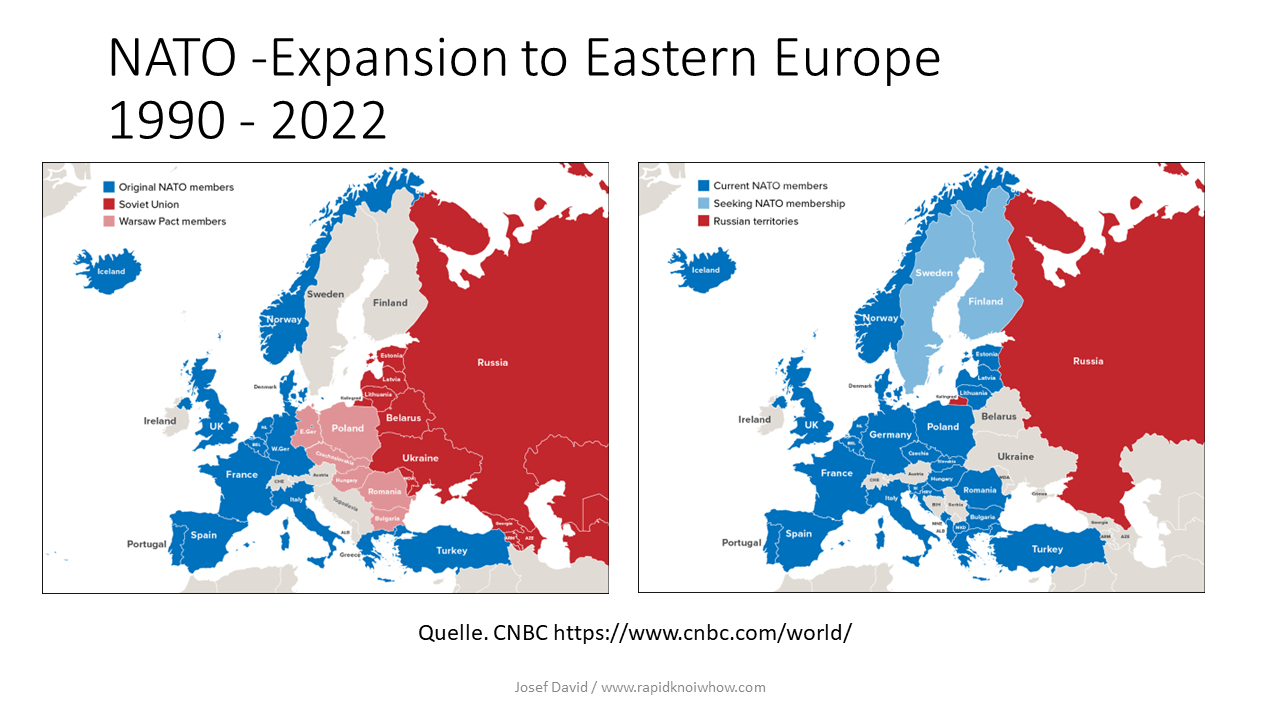n the annals of global politics, the strategic moves of the United States and NATO into Eastern Europe from 1989 to 2023 have been significant. These maneuvers have been driven by a complex interplay of geopolitical, economic, and security considerations. The reaction of Russia, a key player in the region, has been equally complex and multifaceted.
The first major strategic move occurred in 1989 with the fall of the Berlin Wall. This event marked the end of the Cold War era and opened up Eastern Europe to Western influence. The US and NATO saw an opportunity to expand their sphere of influence and promote democratic values in these newly independent states. This was achieved through diplomatic engagement, economic aid, and military cooperation.
In 1999, NATO made another significant move by admitting Poland, Hungary, and the Czech Republic as members. This was followed by seven more Eastern European countries in 2004: Bulgaria, Estonia, Latvia, Lithuania, Romania, Slovakia, and Slovenia. These moves were driven by a desire to consolidate democracy in these countries and secure them against potential threats.
The year 2008 marked another pivotal moment when NATO declared that Georgia and Ukraine would become members in the future. This decision was driven by a desire to further extend NATO’s reach into former Soviet territories.
Fast forward to 2014 when Russia annexed Crimea from Ukraine. This move prompted a strong response from the US/NATO alliance. They increased their military presence in Eastern Europe to deter further Russian moves. This included deploying troops on a rotational basis in Poland and the Baltic states and conducting regular military exercises.
In 2023, amid rising tensions with Russia, NATO made another strategic move by establishing permanent military bases in Poland and the Baltic states. This decision was driven by a need to reassure these countries of NATO’s commitment to their security.
Russia’s reaction to the US/NATO Moves
Russia’s reaction to these moves has been one of strong opposition. It views NATO’s eastward expansion as a threat to its security and influence in the region. The admission of former Soviet states into NATO has been particularly contentious.
Following NATO’s expansion in 1999 and 2004, Russia responded by strengthening its military capabilities and adopting a more assertive foreign policy stance. The promise of NATO membership for Georgia and Ukraine led Russia to wage war against these countries in 2008 and 2014 respectively.
The increased US/NATO military presence in Eastern Europe following Russia’s annexation of Crimea has further heightened tensions between Russia and the West. Russia has responded with military build-ups along its western borders and aggressive actions such as cyberattacks against Western institutions.
The establishment of permanent NATO bases in Poland and the Baltic states in 2023 has elicited a particularly strong response from Russia. It views this as a direct threat to its security and has vowed to take countermeasures.
In conclusion, US/NATO’s strategic moves into Eastern Europe from 1989 to 2023 have been driven by geopolitical considerations such as promoting democracy, securing allies against potential threats, and countering Russian aggression. These moves have been met with strong opposition from Russia which views them as threats to its security and influence in the region.
